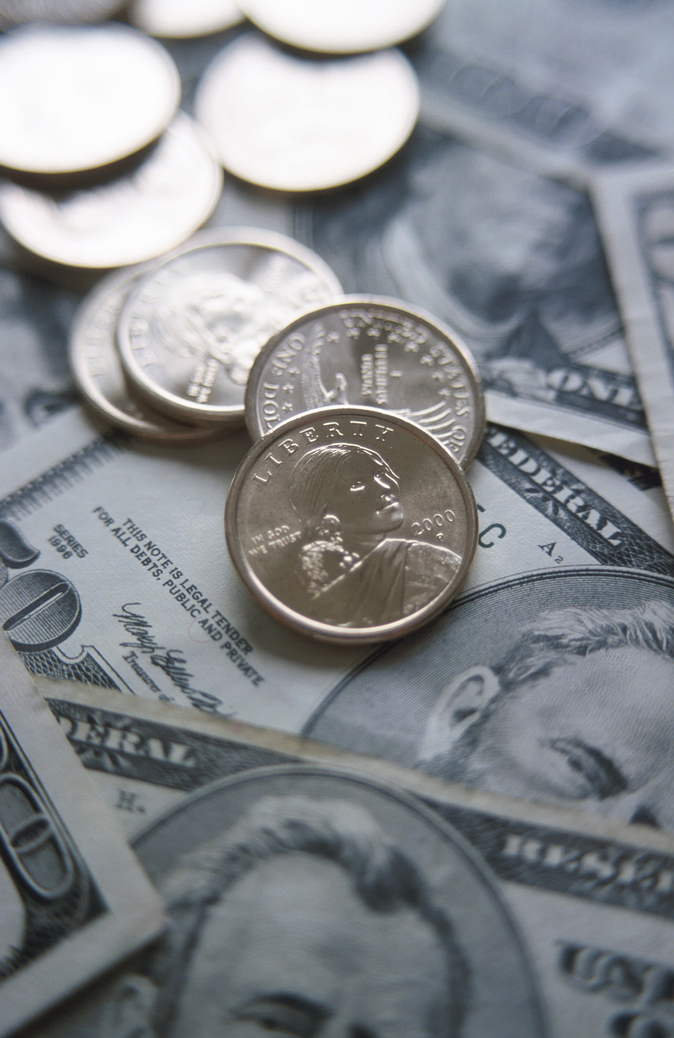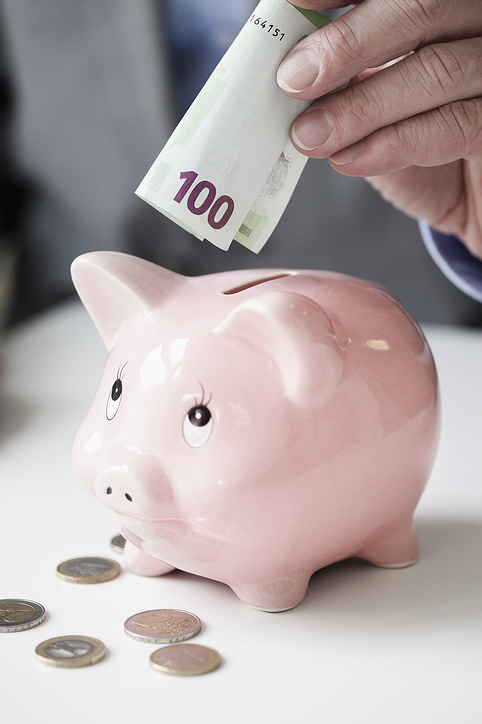
ALL THAT GLITTERS IS NOT GOLD – Why Gold is Not the Asset You Might Think
It’s tough economic times like the present that too often drive people to purchase a commodity like gold, in the hopes it will give them some type of security in their portfolios.
We want to dispel that myth by putting some facts on the table. Gold is not a great investment. Historically it’s been a horrible investment. Gold does not have any intrinsic value. It doesn’t produce cash or income. So having more of it does not necessarily mean you are safer.
Gold can be a good hedge against economic, political, or social fiat currency crises (investment market declines, burgeoning national debt, currency failure, inflation, war and social unrest), but using it as a driver in a portfolio is not a good idea.
GOLD – An Historical Perspective
Gold has been the currency of choice throughout history. In its earliest usage B. C. the value of the coin was based solely on the value of the metal and so the country with the most gold had the most wealth, according to About.com
Many European countries implemented gold standards in the latter part of the 19th century notes Wikipedia. This guaranteed that any amount of paper money could be redeemed by the currency’s government for its value in gold and transactions no longer had to be done with heavy gold bullion or coins.
Between the 1880s and World War 11 the price of gold rose and fell as countries suspended then returned to the gold standard in response to world events like the Great Depression and war.
After World War 11, most countries adopted the Bretton Woods system. This set the exchange value for all currencies in terms of gold and obligated member countries to convert foreign official holdings of their currencies into gold at these par values, according to About.com Since the U.S. held most of the world’s gold, many countries simply pegged the value of their currency to the dollar, making the dollar the defacto world currency. Gold was set at $35 per ounce.
In 1971, gold was repriced to $38 per ounce, then again to $42 per ounce in 1973. As the dollar devalued, it motivated people to sell their greenbacks for gold. Finally, in late 1973, the U.S. government decoupled the value of the dollar from gold altogether. The price of gold quickly shot up to $120 per ounce in the free market.
Throughout time gold has never lost its primal appeal. Whenever recessions or inflation loom, investors return to gold. By 2011, the price of gold was over $1,600 an ounce. It reached a record high of $1,895 on September 5, 2011.
THE ORACLE SPEAKS (and he agrees with CAIM)
In a recent article: “Why stocks beat gold and bonds” at CNNMoney, Warren Buffett, the Oracle of Omaha, echoes our sentiments about gold.
His firm Berkshire Hathway’s definition of investing is forgoing consumption now, in order to have the ability to consume more later. This means that the riskiness of an investment is not measured by volatility, but by the probability that an investment causes its owner loss of purchasing power. Assets may fluctuate in price as long as they are reasonably certain to deliver increased purchasing power over their holding period.
With this in mind, Buffett believes that some of the riskiest investments include money market funds, bonds, mortgages, bank deposits and gold. And he explains why.
Today the world’s gold stock is about 170,000 metric tons. At $1,750 per ounce its value would be about $9.6 trillion. For that amount you could buy all U.S. cropland (400 million acres with output of about $200 billion annually), plus 16 Exxon Mobils (the world’s most profitable company, one earning more than $40 billion annually) and have about $1 trillion left over.
The real difference will be a century from now when those 400 million acres of farmland will have produced staggering amounts of corn, wheat, cotton, and other crops — and will continue to produce that valuable bounty, whatever the currency may be. Exxon Mobil will probably have delivered trillions of dollars in dividends to its owners and will also hold assets worth many more trillions. The 170,000 tons of gold? It will remain unchanged in size and still incapable of producing anything.
Buffett recommends investing in productive assets like farms, real estate and businesses. Ideally these assets should have the ability in inflationary times to deliver output that will retain its purchasing-power value, while requiring a minimum of new capital investment.
The Fate of $100 – 1965 to Today
- $1,336 if invested in 6-month T-Bills
- $4,455 if invested in gold
- $6,072 if invested in the S&P 500
 ALL THAT GLITTERS IS NOT GOLD – Why Gold is Not the Asset You Might ThinkIt’s tough economic times like the present that too often drive people to purchase a commodity like gold, in the hopes it will give them some type of security in their portfolios.We want to dispel that myth by putting some facts on the table. Gold is not a great investment. Historically it’s been a horrible investment. Gold does not have any intrinsic value. It doesn’t produce cash or income. So having more of it does not necessarily mean you are safer.Gold can be a good hedge against economic, political, or social fiat currency crises (investment market declines, burgeoning national debt, currency failure, inflation, war and social unrest), but using it as a driver in a portfolio is not a good idea.
ALL THAT GLITTERS IS NOT GOLD – Why Gold is Not the Asset You Might ThinkIt’s tough economic times like the present that too often drive people to purchase a commodity like gold, in the hopes it will give them some type of security in their portfolios.We want to dispel that myth by putting some facts on the table. Gold is not a great investment. Historically it’s been a horrible investment. Gold does not have any intrinsic value. It doesn’t produce cash or income. So having more of it does not necessarily mean you are safer.Gold can be a good hedge against economic, political, or social fiat currency crises (investment market declines, burgeoning national debt, currency failure, inflation, war and social unrest), but using it as a driver in a portfolio is not a good idea.Dividend Champs 1st Quarter 2012
 4th quarter 2011 earnings are in and many of our companies have met expectations. The few glitches that did occur were due in the main to a stronger dollar and delays in orders.One message that was clear across the board was the impact of events in Europe. Thankfully most of our companies have broadened their international exposure and continue to see growth in the emerging markets.
4th quarter 2011 earnings are in and many of our companies have met expectations. The few glitches that did occur were due in the main to a stronger dollar and delays in orders.One message that was clear across the board was the impact of events in Europe. Thankfully most of our companies have broadened their international exposure and continue to see growth in the emerging markets.CAIM 2012 Outlook
 Saying good-bye to 2011 has been an easy thing to do. It was another tough year for the financial markets, fraught with fear and doubt. Uncertainty in Europe and the United States, a tsunami in Japan, slowing emerging markets, and downgrades of U.S. and European debts were just some of the major worries. Read more >>
Saying good-bye to 2011 has been an easy thing to do. It was another tough year for the financial markets, fraught with fear and doubt. Uncertainty in Europe and the United States, a tsunami in Japan, slowing emerging markets, and downgrades of U.S. and European debts were just some of the major worries. Read more >> ©Copyright 2012, CAIM LLCDisclaimer: NO CONTENT PUBLISHED AS PART OF THE CAIM LLC NEWSLETTER CONSTITUTES A RECOMMENDATION THAT ANY PARTICULAR INVESTMENT, SECURITY, PORTFOLIO OF SECURITIES, TRANSACTION OR INVESTMENT STRATEGY IS SUITABLE FOR ANY SPECIFIC PERSON. TO THE EXTENT ANY OF THE CONTENT PUBLISHED AS PART OF THE BLOG MAY BE DEEMED TO BE INVESTMENT ADVICE, SUCH INFORMATION IS IMPERSONAL AND MAY NOT NECESSARILY MEET THE OBJECTIVES OR NEEDS OF ANY SPECIFIC INDIVIDUAL OR ACCOUNT, OR BE SUITABLE ADVICE FOR ANY PARTICULAR READER. EACH READER AGREES AND ACKNOWLEDGES THAT ANY SPECIFIC ADVICE OR INVESTMENT DISCUSSED IN THE BLOG MUST BE INDEPENDENTLY EVALUATED BY THE READER AND HIS OR HER ADVISER IN VIEW OF THE READER’S INVESTMENT NEEDS AND OBJECTIVES.
©Copyright 2012, CAIM LLCDisclaimer: NO CONTENT PUBLISHED AS PART OF THE CAIM LLC NEWSLETTER CONSTITUTES A RECOMMENDATION THAT ANY PARTICULAR INVESTMENT, SECURITY, PORTFOLIO OF SECURITIES, TRANSACTION OR INVESTMENT STRATEGY IS SUITABLE FOR ANY SPECIFIC PERSON. TO THE EXTENT ANY OF THE CONTENT PUBLISHED AS PART OF THE BLOG MAY BE DEEMED TO BE INVESTMENT ADVICE, SUCH INFORMATION IS IMPERSONAL AND MAY NOT NECESSARILY MEET THE OBJECTIVES OR NEEDS OF ANY SPECIFIC INDIVIDUAL OR ACCOUNT, OR BE SUITABLE ADVICE FOR ANY PARTICULAR READER. EACH READER AGREES AND ACKNOWLEDGES THAT ANY SPECIFIC ADVICE OR INVESTMENT DISCUSSED IN THE BLOG MUST BE INDEPENDENTLY EVALUATED BY THE READER AND HIS OR HER ADVISER IN VIEW OF THE READER’S INVESTMENT NEEDS AND OBJECTIVES.
